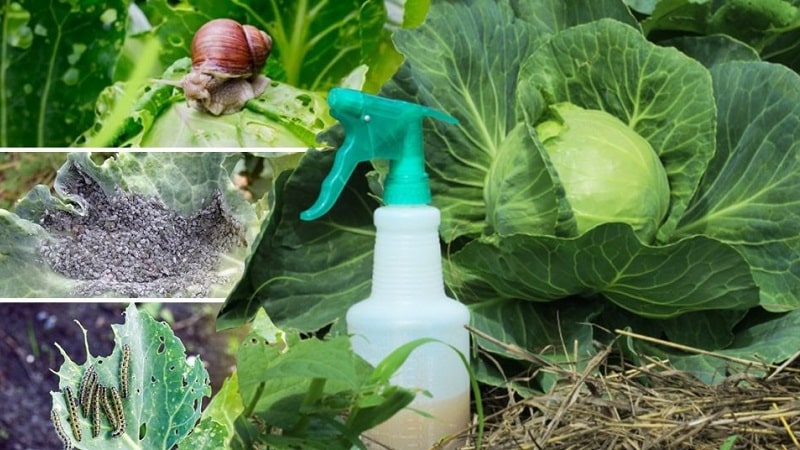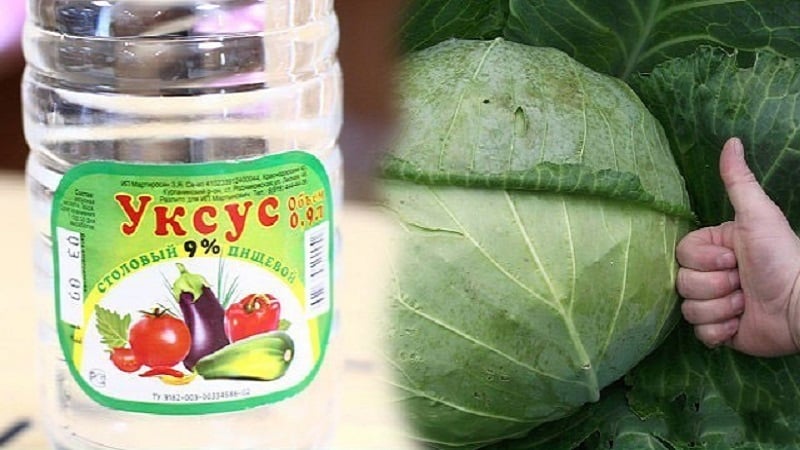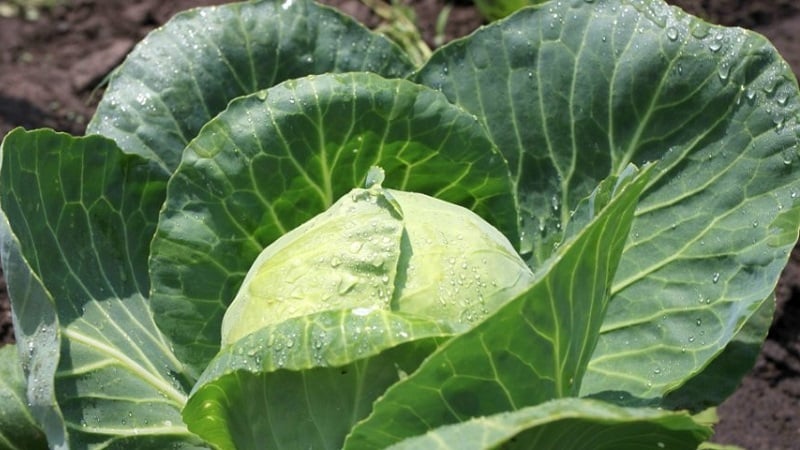How to properly use cabbage vinegar against pests and how effective this remedy is
In the process of growing cabbage, the problem associated with pest attacks has still not lost its relevance. In the fight against these insects, not only chemicals, but also folk remedies are effective. For example, timely treatment with table vinegar will completely preserve the harvest.
Is it possible to treat cabbage with vinegar against pests?
Using vinegar to eliminate pests is very effective.
The product allows you to get rid of insects without causing harm to your own health. However, when handling vinegar, it is important to follow all recommendations.
What pests is it suitable for controlling?
There are many types insects, affecting cabbage.
The most common ones:
- Owl butterflies. Their light gray larvae find refuge in the ground during the day, and at night they damage the cabbage’s root system and stem. Ignoring this problem leads to the complete destruction of seedlings, since the larvae are tenacious and multiply quickly.
- Cabbage butterflies. Gray and black-yellow caterpillars actively attack cabbage leaves, easily penetrate the cabbage heads and eat them from the inside. Overgrown colonies of these insects almost completely destroy the planted cabbage in a short time.
- Cabbage fly. The larvae are white or light gray in color and reach a length of no more than 8 mm. Causing harm to the roots of vegetable crops, they completely destroy the crop.
- Snails and slugs. Warm days with high humidity are favorable conditions for the proliferation of these pests. By eating cabbage leaves, they cause irreparable damage to the crop.
- Cruciferous flea beetles. Despite their small size, they easily gnaw through heads of cabbage.
- Aphid. Settles in colonies on leaves, feeding on their juice.
Processing vegetables with vinegar will create reliable protection against all listed insects.

Advantages and disadvantages of using vinegar
The advantages of using this tool are as follows:
- effective destruction of pests;
- availability and low price;
- environmentally friendly, no toxins;
- possibility of obtaining quick results.
Vinegar has practically no disadvantages, with the exception of two nuances, which are easily leveled:
- the need for use immediately after dissolution in water;
- the likelihood of burns to the leaves due to incorrect dosage.
Using vinegar will not bring the desired result over large planting areas., as well as in the fight against numerous colonies of pests.
Product effectiveness
The sharp aroma of vinegar repels pests and allows you to get rid of them in just a few procedures.
However, the remedy does not work on:
- mole cricket;
- wireworm;
- cabbage nematode.
Which vinegar is suitable, can the essence be used?
Table vinegar is good for spraying cabbage. (9%). An alternative could be essence, but in this case it is important to change the proportions. For example, if, according to the recipe, 1 liter of water contains 15 ml of product (9%), then the same amount of essence liquid will require 10 times less.
How to prepare a solution for treatment
Options for preparing folk remedies:
- Dilute 200 ml of vinegar (9%) in a bucket of water and stir thoroughly;
- 2 tbsp. l. dissolve essences (70%) in a bucket of water.
The prepared solution is used immediately, otherwise it quickly loses effectiveness.
Interesting things on the site:
When and how often to treat
The recommended time for processing heads of cabbage is evening or morning after the dew has completely disappeared.. The procedure is carried out using a watering can or spray bottle, generously watering not only the cabbage, but also the soil near it.
The frequency of treatments is 1 time every 3 days until the pests are completely eliminated. When spraying, be sure to use personal protective equipment to prevent the composition from getting on the mucous membranes and skin.

How to properly treat cabbage with vinegar
During processing, it is important to ensure that the solution gets on both parts of the sheet plates.
To increase efficiency, additional procedures using ammonia, mustard and laundry soap are recommended.
From aphids
It is not advisable to spray ripe, juicy heads of cabbage, which are actively eaten by aphids, with chemicals. In this situation, it is best to use folk remedies. To prepare the solution, dissolve 15 ml of vinegar in 1 liter of water. or 15 ml of essence – in 10 l.
Treatment is carried out 3 times a weekuntil all pest colonies are completely destroyed.
From slugs
To prepare the composition you will need:
- 2 tbsp. l. crushed valerian root;
- 1 tbsp. l. vinegar;
- 2 l + 200 g water.
Sequencing:
- Place the root filled with 200 g of water on the stove and bring to a boil.
- Leave for ½ day.
- Dissolve vinegar in 2 liters of water and mix with valerian decoction.
- Treat the heads of cabbage with a spray bottle 3 times a week, stop the procedure after the slugs disappear.
From caterpillars
The extermination of these insects occurs as follows:
- 2 tbsp. l. vinegar is diluted in 1.5 liters of preheated water, stirred well and poured into a spray bottle or watering can.
- The event is held on a dry and windless day. If it rains after the procedure, it is repeated the next morning.
Advice! To combat caterpillars, it is better to use apple cider vinegar.
From fleas
Flea beetles usually appear in the spring, after the temperature rises to +17°C. Peak activity occurs in July. The main danger is that these insects are very small and their colonies are difficult to notice, and they can destroy a crop in just 3-4 days. The fight against them involves treating all cruciferous crops growing nearby.
Worker the solution is prepared using one of the following methods:
- 200 ml (9%) dissolve in a bucket of warm water and mix well;
- 2 tbsp. l. essences (70%) are mixed with a bucket of water.
Not only the top part of the cabbage is thoroughly treated with the product., but also the soil near its rhizome.
To combat the cabbage leaf beetle, dilute 0.5 liters of vinegar in 10 liters of water.. Since all types of pests cannot tolerate strong and spicy odors, it is recommended to use infusions of mustard powder, garlic and onion peels along with vinegar. Laying out bay leaves, yarrow, wormwood and calendula on the beds is effective.

Precautionary measures
To avoid harm to health, When working with vinegar, gardeners follow a number of rules:
- Use protective equipment: gloves, mask or goggles.
- The use of undiluted essence is not allowed.
- At the end of the procedure, wash your hands thoroughly under running water.
Advice from experienced gardeners
Experienced gardeners recommend:
- regularly spray the cabbage with a solution of potassium permanganate;
- before sowing, treat the seeds with a formaldehyde solution (12%);
- To get rid of white grass caterpillars, treat the heads of cabbage with toothpaste dissolved in water.
Conclusion
Using acetic acid as an insecticide gives effective results. The product is safe for vegetables and human health and at the same time is an excellent alternative to pesticides.